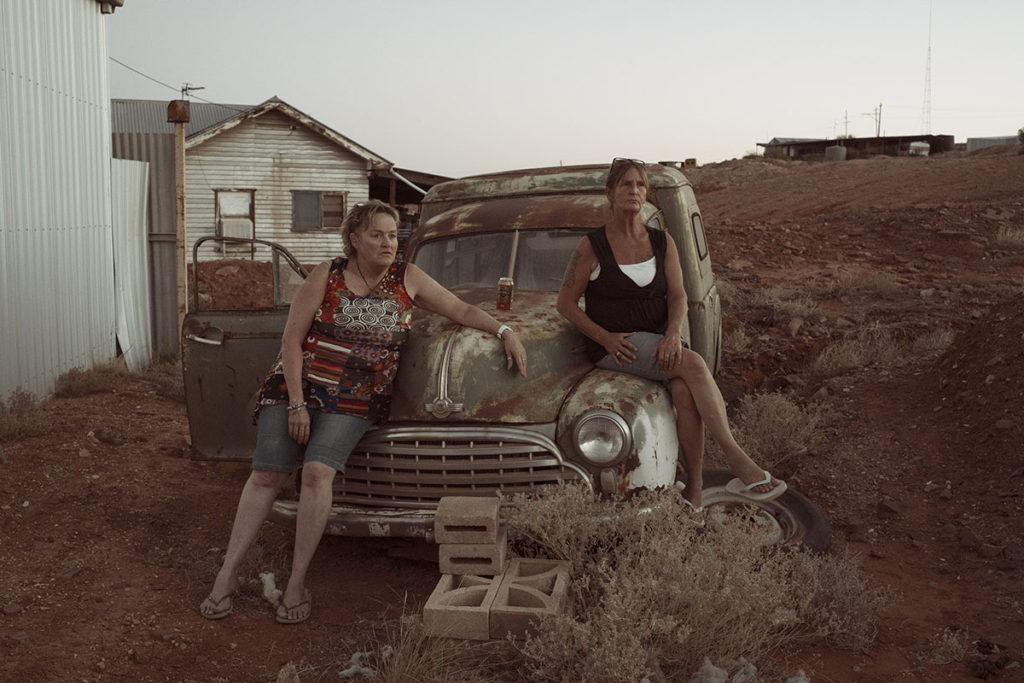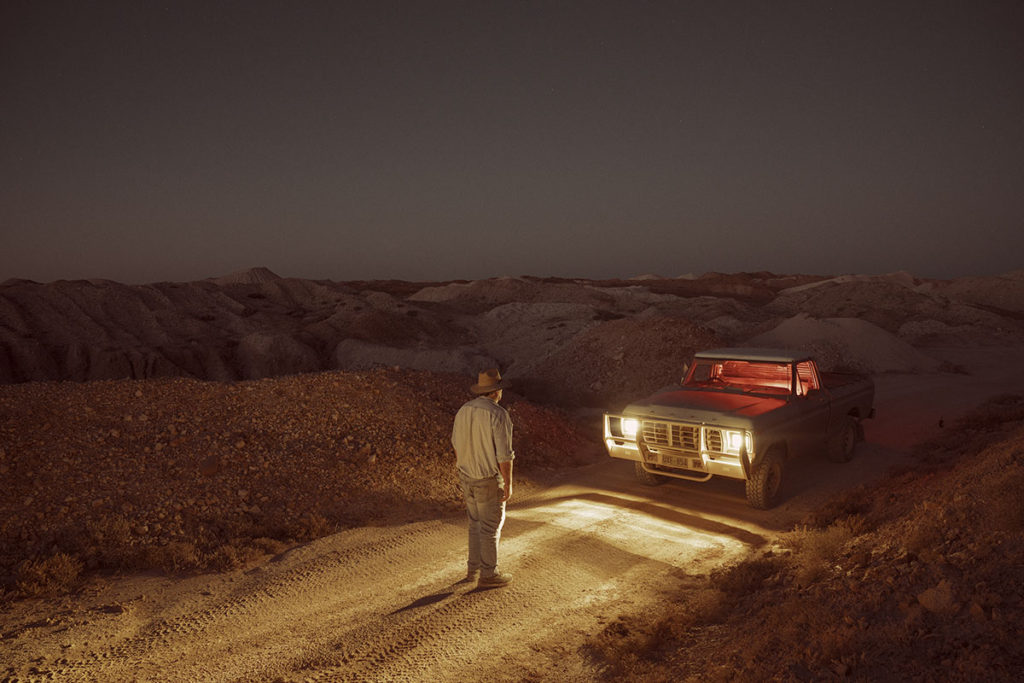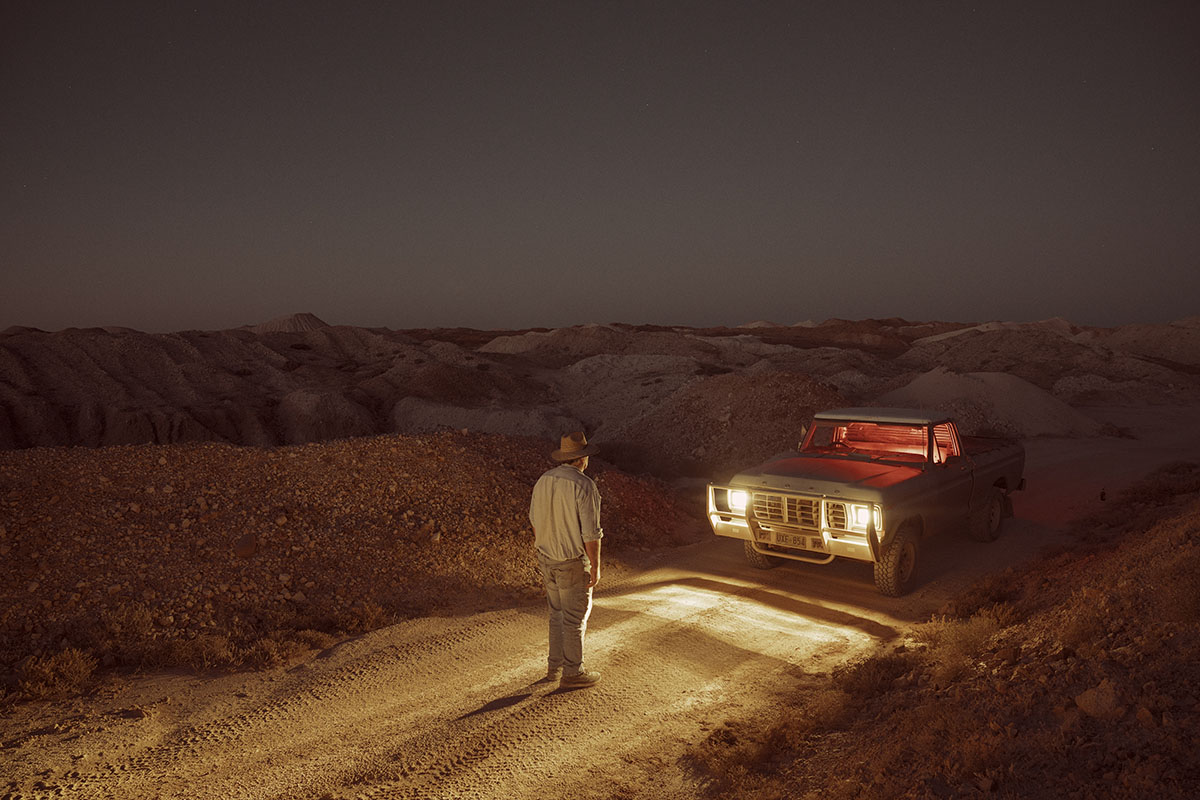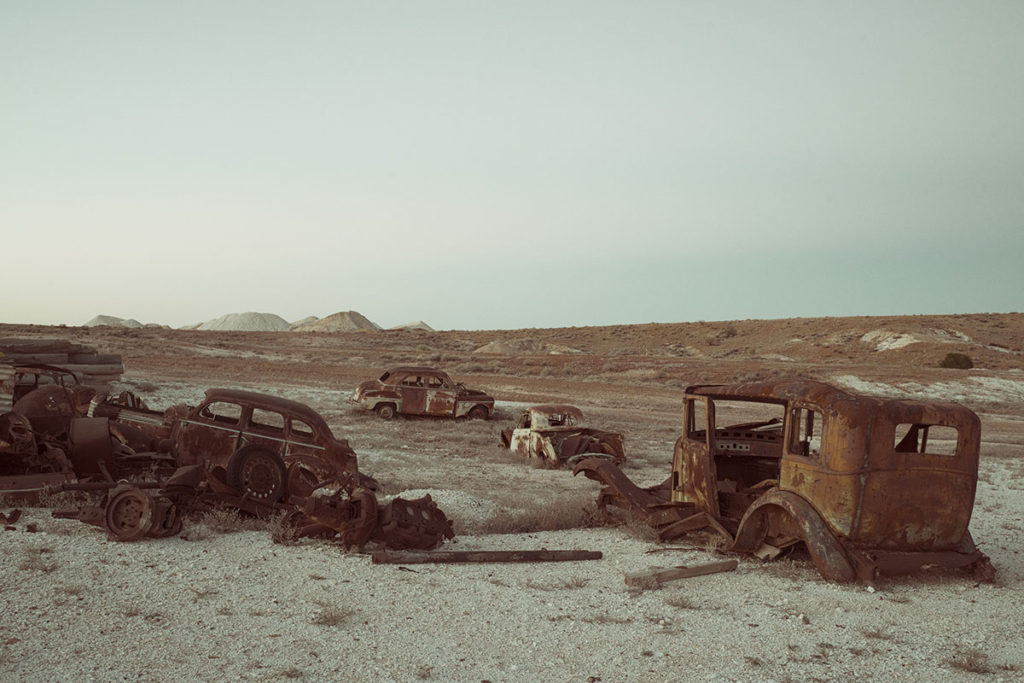For a small town at a dead end in the middle of the desert, Andamooka is surprisingly well represented in contemporary photography and film.
The town is the subject of two Stories finalists in 2020 (Jonathan May and Matthew Thorne), each having also produced a short film alongside their photographic work. In this article we will be focussing on Jonathan May’s Rear View Mirror, a self-published book through Momento Pro which has been celebrated by multiple awards programs including our very own Stories as well as being a finalist in the Australia and New Zealand Photobook of the Year Award for 2019.
So why is Andamooka, a small town of only 316, the subject of so many visual narratives? In my view, the town is representative of an Australia many of us grew up hearing about though never actually experiencing. The kind of Australia depicted in Hollywood films by bad accents and fictional pubs. The draw of Andamooka and many towns like it though, is that it is not fictional. Central to Jonathan May’s Rear View Mirror, it is a very real place where people are born, live and die. It is a real town with real stories that continue on well after a picture has been taken or a film has wrapped production.

In Rear View Mirror, Jonathan May demystifies this space in a tangible way. May relates the town through the lens of a once-local man, returning for a reunion, subsequently confronted by a shadow of what this home once was. Laying in near wreckage, with the opal dried up and representing home to a decreasing population of only 316 people, the subject of May’s work Ingo Hansen is forced to come to terms with the near-empty space where his thriving community once stood.
One of the most notable features of towns like Andamooka are the long sunsets and sunrises. These communities built upon flat plains of inland Australia are some of the only places I have experienced where the terms ‘Golden Hour’ and ‘Blue Hour’ are honest as they actually last for an hour each. May has taken great advantage of this with a good portion of the work having been shot during these times of the day. The soft dusty skies contrasting against the harsh landscape build an atmosphere of longing that is maintained throughout the entirety of the work. This assists in the nostalgic construction of the imagery, consistently relating the work back to the concept of an Australia lost, or perhaps an Australia that never existed in the first place.
When creating work that exemplifies an Australia lost, or perhaps never was, it is a challenge for the artist to not create a piece of work that will be relegated to the same level of romanticism ever present in the aforementioned Hollywood depictions. The representation of and nostalgia for a place which exists only in national identity and ethos, far oversimplified from the reality in which it actually exists. Instead, Rear View Mirror stays true to its course – a depiction of a town once thriving, now a relic of its former self.
It is in this narrative that a character such as Ingo Hansen is so important. Ingo’s stories, experience and perspective are well integrated into the work, making this a book and film not about an outsider’s perspective, but a story told by somebody who can rightfully tell it. It is in these stories, that May has also so perfectly integrated a book of stills alongside a short film. Whilst each still image builds atmosphere and ambiguity, Rear View Mirror comes alive as a film, narrated by Ingo himself and answering many of the questions that you are left wondering upon first viewing the photographic work. This combination of poetic and more literal mediums asks and answers its own questions as the audience becomes more involved.
Work like this needs time. Time to create and time to digest. For this reason, the photo book is the perfect output. The intention of one image of a rusted car in the desert can be so easily lost when it is not positioned next to the home that it belongs to. Through careful sequencing, artistic design and high quality print thanks to Momento Pro, the book is allowed to evolve at its own pace. This is a freedom that is more easily applied to photo books than to films, which is another strength of combining the mediums over a single project.
In 2017 I too made the journey to Andamooka inspired by a family history – my father had worked on the construction of Roxby Downs, a town built directly to the west of Andamooka to service the Olympic Dam mine in the 1980’s. It was here that I found myself quickly immersed in the culture, history and atmosphere of the town. Looking through Jonathan May’s book Rear View Mirror, I can sense the same immersion that I first experienced when exploring the dusty streets surrounding the town. It’s like walking through a historic postcard of Australiana and the failings of our resource-based economy in tandem.

“I’ve always had a goal to shoot for, but now I’ve come to a point where there are no goals. I don’t care anymore. And therefore, I don’t know what to do with the rest of my life.
It takes a certain type of person to love a place like this…
…and it takes a certain type of person to put the effort in to make it special. And those people are just not around. They’re fading away”
– Ingo Hansen
It is this sense of fading, that May has so eloquently communicated in Rear View Mirror. Allowing the audience to come to this conclusion on their own, before validating their assumptions during the final act of the film through the words of a character who has lived to understand it.
REAR VIEW MIRROR from Wolf Tide Films on Vimeo.




